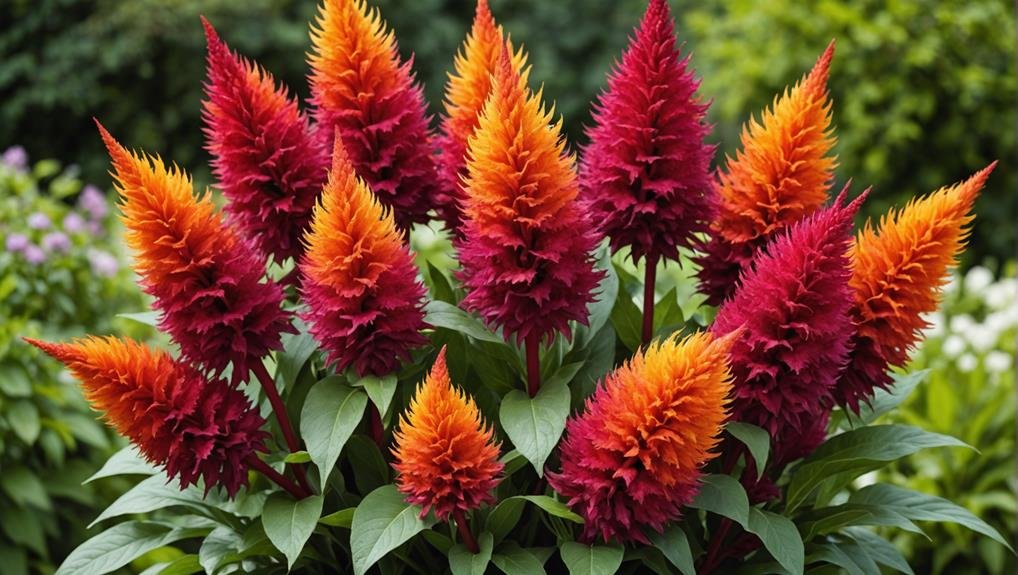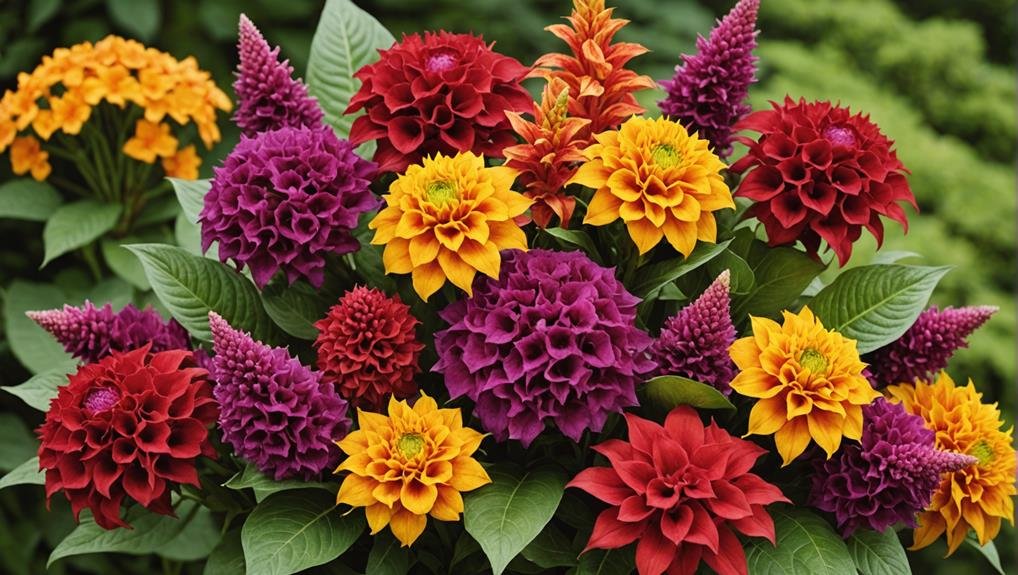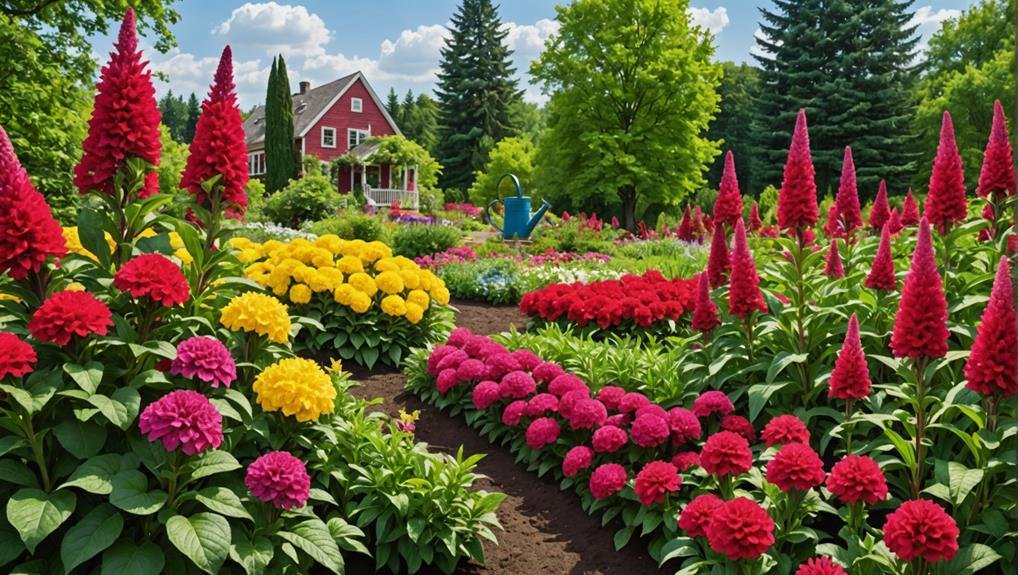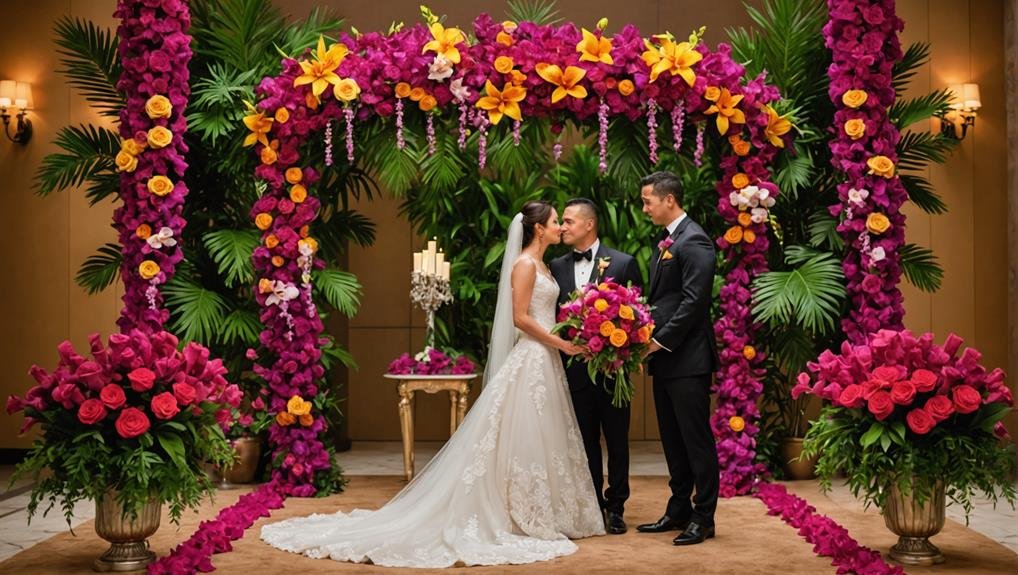When planning the floral arrangements for a wedding, one flower that stands out for its vibrant hues and unique textures is Celosia. Belonging to the Amaranthaceae family, Celosia offers not only visual appeal but also remarkable durability, making it an excellent choice for long-lasting bouquets and centerpieces. With its varieties ranging from feathery plumes to intricate brain-like structures, it adds both depth and interest to any floral design. But what truly sets Celosia apart? Its symbolism of warmth, passion, and energy makes it an ideal floral element to express enduring love and commitment. Explore how this extraordinary flower can elevate your wedding decor.
Flower Overview

Celosia, commonly referred to as Cockscomb, is a vibrant and versatile flower from the Amaranthaceae family, native to Africa. This flower is particularly popular in the floral industry due to its unique and striking appearance, available in two main forms: plumes with feathery flowers and brains with crinkly, brain-like blooms. These varieties make Celosia an eye-catching choice for various floral arrangements, especially in settings demanding bold and distinct displays.
As cut flowers, Celosia is highly valued for its durability and long vase life, making it an excellent option for weddings and other special events. When sourced from wholesalers, Celosia typically comes in wraps of 10 stems, with stem lengths ranging from 60cm to 80cm. This range in stem length allows for flexibility in designing bouquets and centerpieces, catering to different aesthetic preferences and structural requirements.
The flower heads of Celosia are particularly notable for their vibrant colors and unique textures, which can add a dramatic flair to any arrangement. Whether used as a focal point or as an accent, Celosia's distinctive blooms can elevate the visual impact of floral compositions, ensuring they stand out in any setting.
Physical Description
Renowned for its captivating appearance, Celosia boasts an array of vibrant colors and intricate textures that distinguish it from other flowers. This alluring bloom, also known as Cockscomb or Woolflowers, is part of the amaranthus family and originates from Africa. Its name is derived from the Greek word 'kelos', meaning burned, which aptly describes its fiery and vivid appearance.
The physical characteristics of Celosia are truly remarkable and can be detailed as follows:
- Shape: Celosia typically presents in two distinct forms: the fan-shaped variety known as Cockscomb and the plume-like form recognized as Woolflowers.
- Stem Length: The stems of Celosia range from 30 cm to 70 cm, providing versatility for various floral arrangements.
- Texture: The flower heads are densely packed with tiny, velvety blossoms, creating a rich texture that adds depth to any bouquet.
- Vase Life: Celosia has an impressive vase life of 7 to 12 days, making it a practical option for long-lasting wedding displays.
These physical attributes, combined with its vibrant color palette and unique textures, make Celosia a popular choice for wedding bouquets and decorations. Its ability to add both color and texture ensures it stands out in any floral arrangement.
Available Colour Varieties

How does one choose from the striking array of colors when exploring the available varieties of Celosia for wedding arrangements? The vibrant hues of Celosia flowers make them a popular choice for adding a splash of color to any wedding.
CELOSIA VARIETIES come in a range of colors, including red, yellow, pink, and orange, with multi-colored options also available, making them versatile for any theme or palette.
The flower's peak bloom time aligns well with spring and summer weddings, ensuring that fresh, vibrant Celosia is readily available. Australian-grown Celosia, in particular, is favored for weddings as it is fresh and locally available from late summer to early winter.
Stem lengths typically range from 30 cm to 70 cm, offering flexibility in floral arrangements, whether it be bouquets, centerpieces, or decorative accents.
When selecting Celosia flowers for wedding arrangements, it is crucial to choose mature heads with vibrant colors. These will guarantee a beautiful, long-lasting display throughout the event.
The variety in colors and the availability of locally grown options make Celosia an excellent choice for couples looking to infuse their wedding with vivid, eye-catching floral elements.
Latin Name and Taxonomy
The genus Celosia, belonging to the amaranth family Amaranthaceae, comprises several species including Celosia argentea and Celosia cristata, each with distinct flower forms and growth habits.
The Latin name for the genus, Celosia spp., encompasses these diverse species known for their unique flower structures. Celosia argentea, commonly referred to as plumed cockscomb, and Celosia cristata, known as crested cockscomb, exhibit notable differences in their bloom patterns and overall appearance.
Understanding the taxonomy of Celosia is essential for identifying the various species and selecting the appropriate type for wedding flower arrangements. The genus Celosia is characterized by its vibrant and intricate floral structures, making it a popular choice for decorative purposes.
The taxonomic classification aids in distinguishing between the species, ensuring the right variety is chosen to suit specific aesthetic preferences and event themes.
Here are key points to remember about Celosia's taxonomy and Latin name:
- Genus: Celosia
- Family: Amaranthaceae
- Species Examples: Celosia argentea (plumed cockscomb), Celosia cristata (crested cockscomb)
- Key Feature: Unique flower structures
Geographical Origins

Originating from Africa, particularly Nigeria and Madagascar, Celosia has a rich geographical history that contributes to its widespread cultivation and use. The name 'celosia' is derived from the Greek word 'kelos,' meaning 'burned,' which aptly describes its vibrant, fiery plume-shaped flowers. This etymology reflects both the striking appearance and the diverse applications of the plant.
Celosia's journey from its African roots to global prominence is a proof of its adaptability and appeal. In Africa, it is traditionally valued for its medicinal properties, treating ailments such as tapeworm, mouth ulcers, diarrhea, chest pains, and skin conditions. These practical uses underscore its importance beyond mere ornamental beauty.
The plant's versatility extends to its role as a nutritious leafy vegetable in regions like Indonesia and India, where it is incorporated into local diets. This dual functionality of celosia as both a decorative and edible plant has facilitated its cultivation across various continents, including Asia, Europe, and the Americas.
The geographical origins of celosia, combined with its aesthetic and practical benefits, have confirmed its position as a favored choice in gardens, culinary traditions, and wedding floral arrangements worldwide.
Season Availability
Celosia blooms are typically available for weddings from late summer to early winter in Australia, providing a vibrant and unique option for floral arrangements during these seasons. This seasonal window guarantees that couples have access to fresh, locally grown Celosia, which is ideal for wedding work. The bright colors and distinctive textures of Celosia make it a popular choice for creating memorable and eye-catching floral designs.
The season availability of Celosia in Australia can be summarized as follows:
- Late Summer: Celosia starts to become accessible, offering a wide range of colors and shapes.
- Early Autumn: The peak season for Celosia, with an abundance of mature blooms perfect for wedding arrangements.
- Mid-Autumn: Continues to provide high-quality blooms, making it a reliable choice for fall weddings.
- Early Winter: Availability diminishes, but fresh Celosia can still be found locally until the season ends.
Choosing Celosia for your wedding during these times guarantees that you benefit from the freshest blooms, grown locally in Australia. This not only supports local growers but also ensures that your floral arrangements will be vibrant and long-lasting. When planning wedding work, it's essential to take into account season availability to achieve the best possible floral outcome.
Growing Conditions

Growing Celosia demands a warm environment with full sunlight exposure to guarantee robust and healthy blooms. This plant thrives in well-draining soil and benefits greatly from good air circulation, which helps prevent diseases and promotes vigorous growth. Maintaining proper spacing between plants is critical; overcrowding can lead to stunted growth and poor flowering. As a rule of thumb, spacing Celosia plants about 12-18 inches apart will allow sufficient room for each plant to flourish.
Regular watering is essential, especially during hot weather. Sustaining consistent soil moisture without waterlogging is vital to preventing root rot and ensuring vibrant blooms, ideal for floral arrangements. Adding mulch around the base of the plants can help retain moisture and suppress weed growth, further supporting healthy development.
Below is a quick reference guide for ideal growing conditions:
| Growing Factor | Optimum Conditions | Notes |
|---|---|---|
| Climate | Warm | Requires full sun exposure |
| Soil | Well-draining | Enhances root growth and prevents waterlogging |
| Spacing | 12-18 inches apart | Prevents overcrowding and promotes air circulation |
| Watering | Regular | Essential during hot weather, keep soil moist |
| Mulching | Recommended | Helps retain moisture and suppress weeds |
Understanding these growing conditions will optimize Celosia's success, making them a stunning choice for wedding floral arrangements.
Cultural Significance
Understanding the ideal growing conditions of Celosia paves the way to appreciate its rich cultural significance, which spans traditional medicine, culinary uses, and symbolic meanings in various regions. Celosia's vibrant colors and unique flower shapes have made it a symbol of warmth and passion, reflected in its Greek name 'kelos,' meaning 'fire.' This symbolism extends to various cultural practices and ceremonies where Celosia is prominently featured.
Celosia's cultural significance is multifaceted:
- Medicinal Uses: In traditional medicine, Celosia is valued for treating ailments such as tapeworm, mouth ulcers, and eye problems, showcasing its therapeutic potential.
- Culinary Uses: In regions like Indonesia and India, Celosia is consumed as a food source, highlighting its importance beyond ornamental purposes and integrating it into daily life.
- Symbolism: The name 'Celosia' and its flame-like appearance symbolize warmth, passion, and energy, making it a meaningful addition to various cultural and celebratory events.
- Ceremonial Presence: Its visual appeal and historical symbolism make Celosia a popular choice for weddings and other significant events, where it adds both beauty and cultural depth to decorations.
These aspects underscore Celosia's widespread popularity and enduring cultural significance across different societies.
Typical Use in Weddings

To sum up, Celosia is highly valued for its vibrant hues and distinct textures, making it a popular choice for enhancing the visual appeal of wedding florals. Its striking colors, ranging from bold reds to sunny yellows and delicate pinks, make it an excellent addition to bridal bouquets, instantly injecting a burst of color.
Celosia's unique, feathery plumes or crested shapes add a touch of playfulness and elegance to floral arrangements, whether in wedding centerpieces or other decorative elements.
Celosia's flexibility extends to various wedding uses, including boutonnieres and corsages, where its distinctive appearance can either stand out or complement other flowers. The flower's symbolization of passionate affection and enduring love makes it a significant and romantic option for wedding decor, resonating with the celebration of a couple's union.
Moreover, Celosia is highly valued for its extended vase life of 7 to 12 days, ensuring that arrangements stay fresh and vibrant throughout the festivities. Professional florists often suggest pairing Celosia with other sophisticated wedding flowers like Garden Roses to create cohesive and visually pleasing designs.
All in all, Celosia's vivid colors, unique texture, and symbolic importance make it a versatile and beloved addition to wedding floral arrangements.
Alternative Flower Types
While Celosia offers vibrant color and unique texture, exploring alternative flower types can bring additional variety and depth to wedding floral arrangements. Celosia varieties such as Plume and Brain types are exceptional choices, but other floral options can complement them beautifully in wedding bouquets.
- Dahlias: Known for their intricate petal patterns and wide range of colors, dahlias can add a touch of elegance and sophistication. Their large blooms make them ideal focal points in bouquets.
- Roses: A timeless symbol of love, roses are a classic addition to any wedding arrangement. Available in numerous shades, they blend seamlessly with both Plume celosia varieties like Century and Dragons Breath, and Brain celosia varieties like Bombay and Chief.
- Peonies: These lush, full blooms are perfect for creating a romantic and luxurious feel. Their soft, rounded petals can offset the crinkly texture of Brain celosia, adding balance to the bouquet.
- Eucalyptus: For adding greenery and texture, eucalyptus is an excellent choice. Its subtle, silvery leaves can provide a calming backdrop to the vibrant colors of both Plume and Brain celosia varieties.
